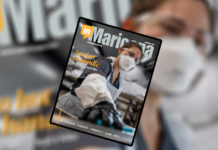
NEW from inmaricopa.com to YOU: From time to time inmaricopa.com will be bringing you timely information that you will find both useful and informative. Articles by local experts will focus on health, computer technology, business/tax information and getting along in the world in which we live.
Fibromyalgia is a hot topic these days. In years past, there was much debate in the medical community as to whether the disorder even existed. Now fibromyalgia is the second most commonly diagnosed rheumatic disorder in the United States, according to the American College of Rheumatology. Although the physiology is not clearly understood, there are a grouping of symptoms often associated with this disease.
Occurring more often in women, fibromyalgia symptoms range from muscle aches and pains, fatigue, stiffness, difficultly concentrating, sleep interruptions and intestinal or bowel disorders. The pain associated with fibromyalgia often fluctuates in duration and intensity. People receive a diagnosis of fibromyalgia when 11 out of 18 designated points on the body are tender to pressure (these 18 points designated on the body closely correspond to the location of acupuncture points). Fibromyalgia is commonly treated with analgesic medications, antidepressants and muscle relaxants prescribed by a physician.
In 1997 the National Institute of Health had cited fibromyalgia as one of the many conditions acupuncture could be useful in treating. Recent research suggested that acupuncture can provide relief to those afflicted with fibromyalgia. Most recently, in a study conducted by the Mayo Clinic, patients receiving acupuncture had a marked improvement in the severity of their pain. These patients were moderate to severe fibromyalgia sufferers, people for whom previous treatment methods had not given satisfactory relief. During this study subjects also experienced diminished fatigue, anxiety and stress. The most substantial finding was that seven months after the study, patients still felt less pain compared to the group who did not receive acupuncture during the study.
Much like fibromyalgia, the mechanism by which acupuncture helps some disorders is not fully understood. However, we know that acupuncture releases endorphins, which are feel good chemicals responsible for “runner’s high” and which cause pain relief. Direct stimulation of certain muscle points will cause a reduction in muscle tightness and spasm, which will help reduce muscle pain as well. Traditionally in Chinese medicine, acupuncture is seen as helping to improve the balance of ‘Qi’ or the body’s energy that animates and supports the functions of the body. It flows through pathways called meridians (which acu-points are located on) and provides nourishment for every cell in the body. Acupuncture aims to eliminate the visible symptoms while also addressing the root cause and underlying imbalances. Most importantly acupuncture can be used with or without the help of medications prescribed by your doctor.
Many first-time patients ask me, “Does acupuncture hurt?” No! Unlike needles used for injections and blood draws, acupuncture needles are ‘hair thin.’ The needles are sterile, one time use and are virtually painless. Even people with a strong aversion to needles are able to enjoy the benefits of acupuncture.
(References: Mayo clinic proceedings, 2006, 1997 NIH Consensus on the Efficacy of Acupuncture)
Christina Lambert is a Licensed Acupuncturist at Alliance Health Center, located in the Maricopa Business Center off Honeycutt Road. She can be reached at (520) 568-4494. For more information please visit our website at www.AllianceHealthMaricopa.com.
File photo
Have a topic you’d like to see addressed by a guest expert? Please email it to inmaricopa.com for consideration.









![City gave new manager big low-interest home loan City Manager Ben Bitter speaks during a Chamber of Commerce event at Global Water Resources on April 11, 2024. Bitter discussed the current state of economic development in Maricopa, as well as hinting at lowering property tax rates again. [Monica D. Spencer]](https://www.inmaricopa.com/wp-content/uploads/2024/04/spencer-041124-ben-bitter-chamber-property-taxes-web-218x150.jpg)
![Maricopa restaurateur makes Food Network connection [Namkeen Dhaba]](https://www.inmaricopa.com/wp-content/uploads/2024/04/439456716_377105198650519_7536248579664805896_n-218x150.jpg)

![O’Reilly gears up for second Maricopa location An exterior view of O'Reilly Auto Parts on John Wayne Parkway on May 2, 2024.[Monica D. Spencer]](https://www.inmaricopa.com/wp-content/uploads/2024/05/spencer-050224-oreilly-second-location-web-100x70.jpg)
![Province writer opens the athlete’s mind in new book Tom Schuman, a Province resident, poses with a copy of his new book, "My Wide World of Sports," outside his home on May 2, 2024. [Monica D. Spencer]](https://www.inmaricopa.com/wp-content/uploads/2024/05/spencer-050224-tom-schuman-sports-book-web-01-100x70.jpg)

